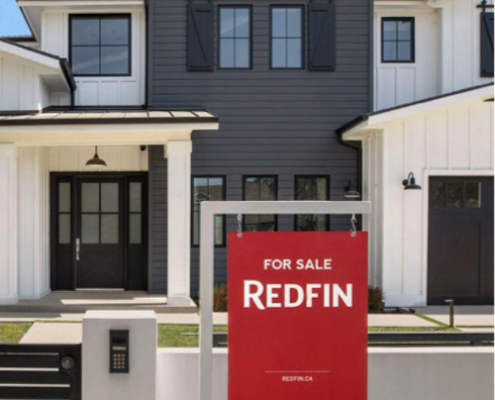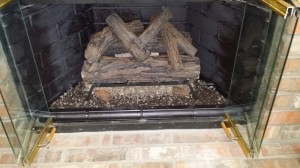5 Ways to Modernize Your Gas Fireplace for Energy Efficiency
Gas fireplaces are a wonderful source of warmth and ambiance, offering convenience and comfort at the press of a button. However, many homeowners are unaware that their gas fireplaces could be performing at a much higher level of energy efficiency. Over time, wear and tear, outdated components, or lack of regular maintenance can cause your fireplace to waste energy, leading to higher gas bills and less warmth in your home.
If you’re looking to improve your fireplace’s efficiency and reduce your energy consumption, you’re in the right place. This guide outlines 5 effective ways to modernize your gas fireplace for energy efficiency. From simple upgrades to regular maintenance, these steps will help you optimize your fireplace’s performance, saving both money and energy.
Let’s dive into how these improvements can not only enhance your fireplace but also make your home more sustainable and cost-effective.
Upgrade to a Direct-Vent Gas Fireplace
Why a Direct-Vent Fireplace?
One of the most significant ways to modernize your gas fireplace is to switch to a direct-vent gas fireplace. Unlike traditional models, a direct-vent fireplace vents directly outside the house, using two separate pipes—one for exhaust and another for fresh air intake. This design prevents the need for room air, making it much more energy-efficient. By drawing in fresh air from outside, the system doesn’t deplete the indoor air, which in turn prevents heated air from escaping.
How Does It Save Energy?
A traditional vented fireplace often lets a considerable amount of heated air escape up the chimney. With a direct-vent system, the combustion is contained and exhausted directly outside, which ensures the warmth stays inside your home. This model uses less energy to produce heat and makes better use of the energy it generates. Direct-vent fireplaces are perfect for modern homes, especially those seeking eco-friendly solutions.
If you’re considering making this switch, Lucky Sully Chimney Sweep offers professional Gas Fireplace Services to ensure a smooth transition. Our experienced technicians will inspect your system, help you choose the right direct-vent model, and install it correctly for optimal efficiency.
Install a New Glass Door for Better Insulation
Why Glass Doors Matter for Energy Efficiency
Installing or upgrading to a high-quality glass door for your gas fireplace can significantly improve its energy efficiency. Glass doors act as a barrier, preventing heated air from escaping into the room, while also stopping cold air from entering the fireplace. This simple addition creates a more controlled environment inside the fireplace, keeping your home warmer without overuse of gas.
How It Works
A glass door functions by providing a sealed boundary that prevents air leakage, thereby retaining the heat generated by the flames. Additionally, the glass helps maintain optimal combustion, ensuring that the gas burns more efficiently. Some modern glass doors even feature built-in insulation, making them even more effective at retaining heat and improving the overall energy efficiency of your fireplace.
If you need a glass door upgrade or installation, Lucky Sully Chimney Sweep provides professional services to help you choose and install the best glass door for your fireplace, ensuring maximum energy retention and comfort.
Add a Thermostat for Automated Temperature Control
Why a Thermostat Can Save You Energy
Installing a thermostat in your gas fireplace is an excellent way to boost energy efficiency. Modern thermostats are designed to regulate the temperature of the room by automatically adjusting the flame size based on the room’s temperature. If the room becomes too warm, the thermostat will reduce the heat output, saving gas and reducing energy waste.
How It Saves Energy
With a thermostat, there’s no need to manually adjust the temperature of your fireplace, and it ensures the system only runs when it’s needed. This intelligent temperature regulation minimizes the use of unnecessary gas, ultimately reducing your energy consumption. Plus, it helps maintain a consistent and comfortable temperature in your home without any abrupt fluctuations.
At Lucky Sully Chimney Sweep, we offer expert Gas Fireplace Repair and thermostat installations. Our professionals will help you choose the ideal thermostat for your needs, ensuring your fireplace operates as efficiently as possible.
Upgrade to a High-Efficiency Gas Burner
What Makes High-Efficiency Burners So Effective?
If your gas fireplace is an older model, it may have an outdated burner that’s not performing at its best. Upgrading to a high-efficiency gas burner can significantly improve the energy efficiency of your fireplace. High-efficiency burners burn the gas more completely, ensuring more heat is generated with less fuel. This results in less wasted energy and better heat output, which is ideal for maximizing warmth while reducing consumption.
How It Helps Save Energy
A high-efficiency gas burner uses better combustion technology, which means the flame burns more thoroughly, leaving less gas wasted in the process. This results in higher heat output and reduced energy use, helping your fireplace work more effectively and efficiently. Modern burners are also designed to last longer and require fewer repairs, which translates to lower maintenance costs.
To upgrade your gas burner, trust Lucky Sully Chimney Sweep. Our team offers expert advice and installation for the most efficient burners available, ensuring your gas fireplace operates at peak performance for years to come.
Regular Cleaning and Maintenance to Prevent Energy Loss
Why Regular Maintenance Is Essential
Routine maintenance and cleaning are key to keeping your gas fireplace running at maximum efficiency. Over time, dust, soot, and debris can accumulate inside the fireplace, obstructing airflow and reducing the effectiveness of the gas burner. Regular maintenance ensures that all components, including burners, gas valves, and vents, are clear of obstructions, enabling your fireplace to operate as intended.
How It Helps Improve Efficiency
Regular cleaning removes built-up debris and prevents the accumulation of dirt that can hinder combustion. A clean fireplace system ensures that the gas flows efficiently and that no heat is lost due to blockages or inefficiencies. In addition, scheduled maintenance checks allow professionals to identify any underlying issues, preventing costly repairs and improving long-term efficiency.
Lucky Sully Chimney Sweep offers comprehensive maintenance services that keep your gas fireplace in top shape. Our skilled team provides inspections, cleaning, and repairs to ensure your fireplace stays efficient and safe throughout the year.
Conclusion
Modernizing your gas fireplace for energy efficiency is not only an excellent way to reduce your energy consumption but also a smart investment for the long-term comfort and sustainability of your home. By upgrading to a direct-vent fireplace, installing glass doors, adding a thermostat, upgrading the gas burner, and keeping up with regular maintenance, you can maximize the effectiveness of your fireplace while minimizing your energy costs.
At Lucky Sully Chimney Sweep, we specialize in Gas Fireplace Services that will help you achieve an energy-efficient, high-performing fireplace. Our expert team is ready to assist with everything from installation to regular maintenance, ensuring your fireplace provides you with warmth, comfort, and energy savings for years to come.
FAQs
How often should I clean my gas fireplace?
It’s recommended to clean your gas fireplace once a year to ensure it’s running efficiently. Regular cleaning helps prevent debris buildup and optimizes performance.
Can upgrading my burner really improve efficiency?
Yes, upgrading to a high-efficiency burner can significantly increase your fireplace’s heat output while using less gas, improving both energy efficiency and comfort.
Do I need a professional to install a thermostat for my fireplace?
Yes, it’s best to have a professional install the thermostat. Our technicians at Lucky Sully Chimney Sweep can ensure it’s correctly calibrated for maximum energy savings.
What are the benefits of a direct-vent fireplace?
Direct-vent fireplaces are more energy-efficient because they don’t rely on indoor air. Instead, they draw air from outside, preventing heat loss and reducing energy waste.
What does regular maintenance include?
Regular maintenance includes cleaning the fireplace, checking for gas leaks, inspecting the burner, and ensuring that all components are functioning properly to prevent energy loss.














